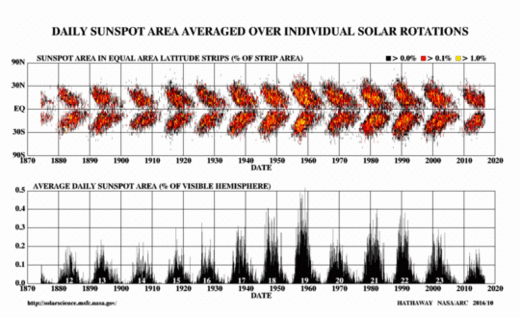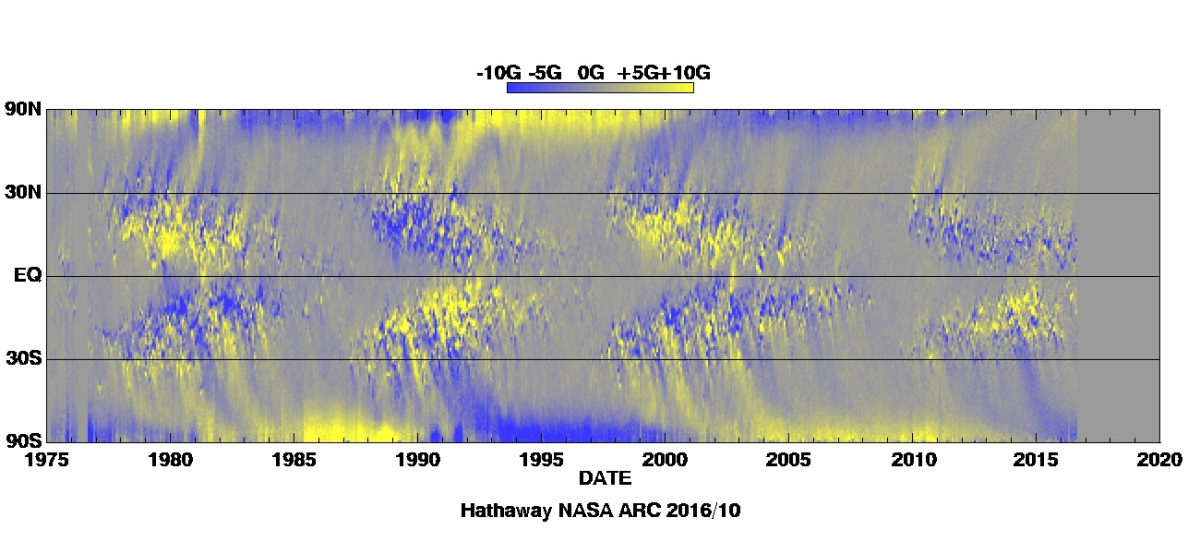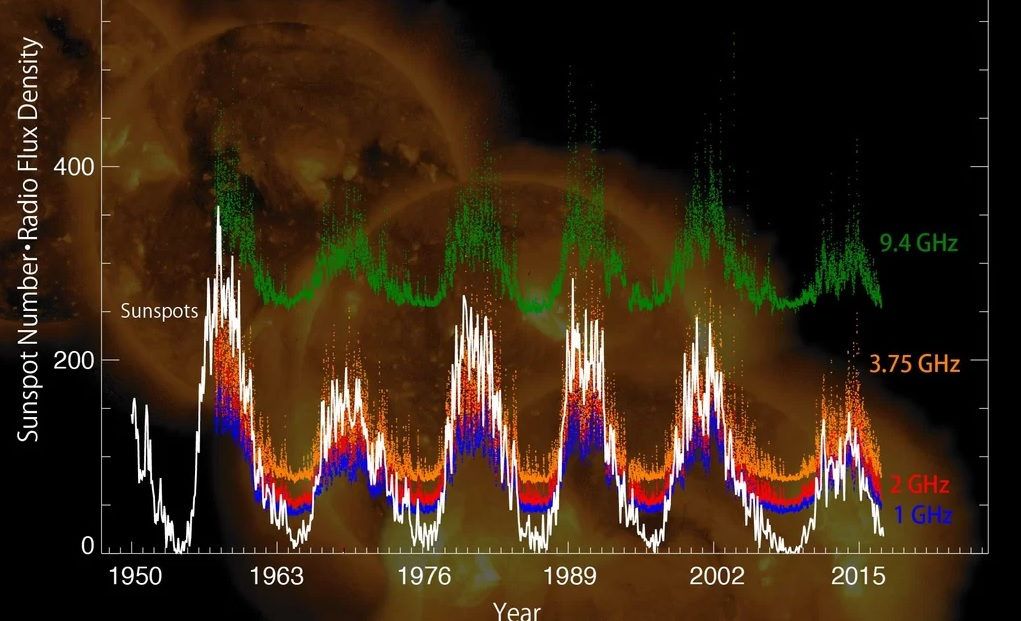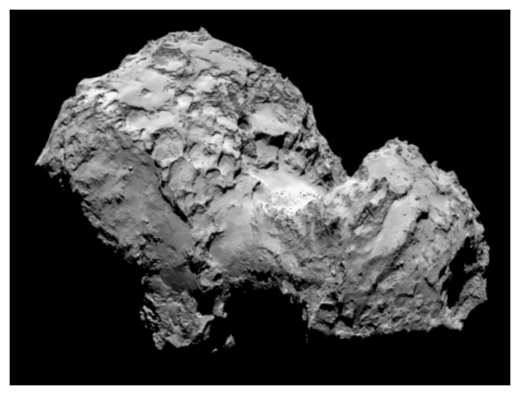The abstract states:
"... we found that the microwave spectra at the solar minima of Cycles 20-24 agree with each other. These results show that the average atmospheric structure above the upper chromosphere in the quiet-Sun has not varied for half a century, and suggest that the energy input for atmospheric heating from the sub-photosphere to the corona have not changed in the quiet-Sun despite significantly differing strengths of magnetic activity in the last five solar cycles."See Figure 1 above.
Cyclic Catastrophism
The number of posts concerning sun spots on this site can be seen simply by entering clicking here . The reason for this interest is the link between the sun spots and the impact on Jupiter out of which proto-Venus was created 6,000 years ago. The fusion explosion 'left behind' on Jupiter was manifested as a two-million km plume, known as Juno, which could be seen rotating left and right every nine hours for thousands of years and was therefore imagined to be Zeus' shield (Aegis) used in combat.
The birth of Venus proved that Jupiter comprises the full range of the known solar system abundances distributed evenly throughout its solid, methane gas hydrate body and the material ejected by the plume had the same composition. The longevity of the plume, now manifest as the Great Red Spot, 6,000 years later, proves that Jupiter is highly deuterated. As the plume material cooled, condensed and solidified, small plastic pieces, travelling in similar directions, combined (splatted) to form grotesque, black, low density, strangely tough bodies, exemplified by 67P Churymov-Gerasiemento (Figure 2).
Many millions of these were ejected throughout the solar system due to the vector sum of Jupiter's orbital velocity 13.7 km/s and its rapid spin, some 12 km/s, forming all of the main-belt and Kuiper belt asteroids. One obvious class of these Juno asteroids are the Trojans, of which there are known to be more than a million 'orbiting' at Jupiter's Lagrange points. One class of these Juno asteroids has been invisible to astronomers until recently, the Kreutz sungrazers. The sun-staring probes, SOHO and STEREO, have observed over 2,500 of these asteroids dissappearing into the Sun since 1995 and several hundred more are now known to be in exactly the same orbit, approaching the sun from below the ecliptic plane, because they were ejected from 22 degrees S Latitude, the location of the Great Red Spot.

What is currently known as the solar, or sun spot cycle, has a period of ~11 years, close to that of Jupiter's orbital period (Figure 3). Each 'butterfly' cycle begins with spots at high north and south latitudes because the Kreutz orbit is inclined and slightly eccentric due to the inclination and eccentricity of Jupiter's orbit at the times of the ejections. The spots are symmetrically located (N-S) because those bodies which impact on the approach are coming from the south and if they just miss the Sun, they pass through the ecliptic, then impact on the north of the far side. For short periods between the active periods (the butterflys) the Kreutz orbit fails to hit the sun, allowing observations of the undisturbed solar surface, which is the subject of the cited paper, then the next 11-year-cycle begins (Figure 1).
Despite the SOHO and STEREO observations, that none of the Kreutz sungrazers have survived their Sun encounters, solar scientists insist that they are not the cause of sunspots partly because their coal-like color results in the underestimation of their masses, assuming they are composed of water ice. Perhaps the most important reason is that the sunspots can be seen to be magnetically polarized by studying the iron spectra within them. Even more deceptive, they are polarized in the direction opposite to the sun's magnetic field at the beginning of each active period. To complicate the picture, the magnetic field of the sun reverses at the peak of each cycle, as shown in Figure 4 at top and bottom. Because of these magnetic 'anomalies' the scientists believe the spots are generated by the magnetic field deep within the Sun. The additional facts which corroborate the cyclic catastrophism hypothesis are: (a) the sunspots are several thousand degrees cooler than the normal surface; (b) always exhibit the spectrum of iron and water; and (c) based upon Doppler shifts are plunging into the Sun at 30,000 km/hr.

Magnetic Features of the Juno Asteroids
The 67P-like, Juno asteroids condensed and crystalized from the hot plume while still within the enormous magetic field of Jupiter. As they approached the Sun they became oriented opposite the sun's magnetic field. As a result, they strike the surface of the sun oriented opposite the existing solar magnetic field direction. The impacts of the large number of reverse-oriented Juno asteroids at the peak of each cycle is sufficient to reorient the observed magnetic field of the entire Sun. This proves that the field is a superficial, surface aspect of the sun, due only to the explosive impact on Jupiter ~ 6,000 years BP. This view is supported by the observations noted in the cited paper, that the good old, constant sun lies beneath the influx of Juno asteroids and will be there for millions of more years.
Composition of the Sun
The currently accepted composition of the Sun has been effected by the events of cyclic catastrophism in two ways. The Juno asteroids have disguised the composition of the solar interior, evidenced by the emission lines from the photosphere. Secondly, during the same period innumerable small rocky/iron bodies blasted from Mars when it orbited the Earth 3687 to 687 BC, are continually falling into the corona, or atmosphere of the Sun, which is 200 solar radii from the visible surface. The UV radiation from these impacts has, until recently, been interpreted as temperature of the entire layer at millions of degrees, but since the impacts have been telescopically resolved, they have been labeled nanoflares. But solar scientists still believe that the nanoflares are being shot upward 200 solar radii by the magnetic field of the Sun.
This results in another misinterpretion, that the Fraunhofer, or absorption spectra, due to the elements in these small bodies deposited in the corona, give information on the composition of the Sun itself. Further, the similarities of the absorption spectra with the non-volatile elements in meteorites on Earth has led to the idea that the entire solar system formed from meteorites.
About author John Ackerman.





I question your eagerness to prove a hotly contested point based on such flimsy evidence and I don't believe it will fly on this site, but you never know. Best of luck to you.